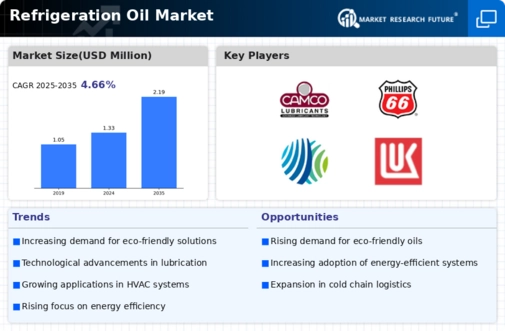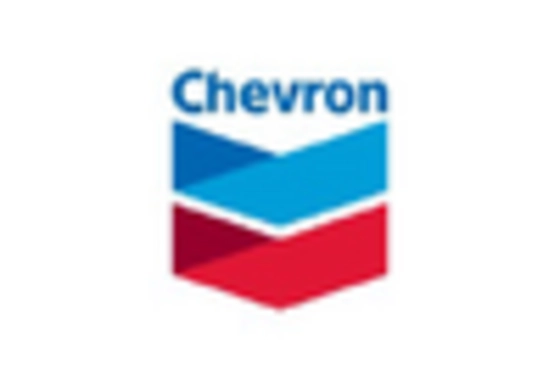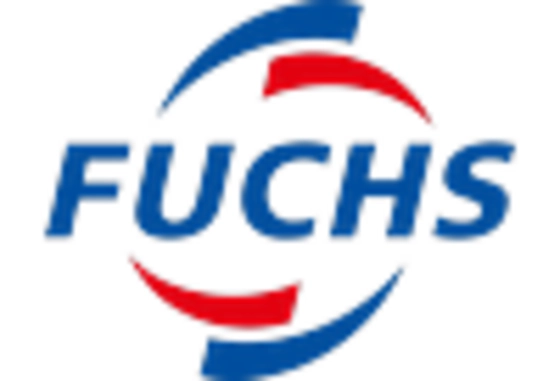-
EXECUTIVE SUMMARY
-
\r\n1.1 MARKET ATTRACTIVENESS
-
ANALYSIS 21
-
\r\n1.1.1 GLOBAL REFRIGERATION OIL MARKET, BY
-
TYPE 21
-
\r\n1.1.2 GLOBAL REFRIGERATION OIL MARKET, BY REFRIGERANT
-
TYPE 22
-
\r\n1.1.3 GLOBAL REFRIGERATION OIL MARKET, BY APPLICATION
-
23
-
\r\n2 MARKET INTRODUCTION
-
\r\n2.1 DEFINITION
-
24
-
\r\n2.2 SCOPE OF THE STUDY 24
-
\r\n2.3 MARKET STRUCTURE
-
24
-
\r\n3 RESEARCH METHODOLOGY
-
\r\n3.1 RESEARCH
-
PROCESS 25
-
\r\n3.2 PRIMARY RESEARCH 26
-
\r\n3.3
-
SECONDARY RESEARCH 26
-
\r\n3.4 MARKET SIZE ESTIMATION 27
-
\r\n3.5
-
FORECAST MODEL 29
-
\r\n3.6 LIST OF ASSUMPTIONS 29
-
\r\n4
-
MARKET DYNAMICS
-
\r\n4.1 INTRODUCTION 30
-
\r\n4.2
-
DRIVERS 31
-
\r\n4.2.1 INCREASING USE OF REFRIGERATION SYSTEMS
-
IN THE COMMERCIAL AND INDUSTRIAL SECTORS 31
-
\r\n4.2.2 GROWING
-
DEMAND FOR CONSUMER ELECTRONICS 31
-
\r\n4.2.3 INCREASING DEMAND
-
FOR HIGH PERFORMANCE REFRIGERANTS IN AUTOMOTIVE AC SYSTEMS 32
-
\r\n4.2.4
-
DRIVERS IMPACT ANALYSIS 33
-
\r\n4.3 RESTRAINT 33
-
\r\n4.3.1
-
PHASING OUT OF THE USE OF HFCS AND HCFCS 33
-
\r\n4.3.2 RESTRAINTS
-
IMPACT ANALYSIS 34
-
\r\n4.4 OPPORTUNITY 34
-
\r\n4.4.1
-
INCREASING DEMAND FOR HIGH-QUALITY REFRIGERATION OIL 34
-
\r\n4.5 TREND 35
-
\r\n4.5.1
-
INCREASING USE OF NATURAL REFRIGERANTS 35
-
\r\n5 MARKET FACTOR
-
ANALYSIS
-
\r\n5.1 SUPPLY CHAIN ANALYSIS 36
-
\r\n5.1.1 RAW MATERIAL
-
SUPPLIERS 36
-
\r\n5.1.2 REFRIGERATION OIL PRODUCERS 36
-
\r\n5.1.3
-
DISTRIBUTION CHANNEL 36
-
\r\n5.1.4 APPLICATION 37
-
\r\n5.2
-
PORTER’S FIVE FORCES MODEL 37
-
\r\n5.2.1 THREAT OF NEW ENTRANTS
-
38
-
\r\n5.2.2 INTENSITY OF COMPETITIVE RIVALRY 38
-
\r\n5.2.3
-
THREAT OF SUBSTITUTES 38
-
\r\n5.2.4 BARGAINING POWER OF SUPPLIERS
-
38
-
\r\n5.2.5 BARGAINING POWER OF BUYERS 38
-
\r\n5.3
-
GLOBAL REFRIGERATION OIL PRICING ANALYSIS 39
-
\r\n6 GLOBAL REFRIGERATION
-
OIL MARKET, BY TYPE
-
\r\n6.1 INTRODUCTION 40
-
\r\n6.2
-
SYNTHETIC OIL 41
-
\r\n6.3 MINERAL OIL 43
-
\r\n7
-
GLOBAL REFRIGERATION OIL MARKET, BY APPLICATION
-
\r\n7.1 INTRODUCTION
-
44
-
\r\n7.2 REFRIGERATOR AND FREEZER 46
-
\r\n7.3
-
CHILLERS 47
-
\r\n7.4 AIR CONDITIONERS 48
-
\r\n7.5
-
AUTOMOTIVE AC SYSTEMS 49
-
\r\n7.6 AFTERMARKET 50
-
\r\n7.7
-
OTHERS 51
-
\r\n8 GLOBAL REFRIGERATION OIL MARKET, BY REFRIGERANT TYPE
-
\r\n8.1
-
INTRODUCTION 52
-
\r\n8.2 AMMONIA/CO2 53
-
\r\n8.3
-
HYDRO FLUOROCARBON (HFCS) 54
-
\r\n8.4 OTHERS 56
-
\r\n9
-
GLOBAL REFRIGERATION OIL MARKET, BY REGION
-
\r\n9.1 INTRODUCTION
-
57
-
\r\n9.2 NORTH AMERICA 63
-
\r\n9.2.1 US 67
-
\r\n9.2.2
-
CANADA 69
-
\r\n9.3 EUROPE 73
-
\r\n9.3.1 GERMANY
-
77
-
\r\n9.3.2 UK 80
-
\r\n9.3.3 RUSSIA
-
82
-
\r\n9.3.4 FRANCE 85
-
\r\n9.3.5 SPAIN 87
-
\r\n9.3.6
-
ITALY 90
-
\r\n9.3.7 POLAND 92
-
\r\n9.3.8 REST OF
-
EUROPE 95
-
\r\n9.4 ASIA-PACIFIC 98
-
\r\n9.4.1 CHINA 102
-
\r\n9.4.2
-
JAPAN 105
-
\r\n9.4.3 INDIA 107
-
\r\n9.4.4 SOUTH KOREA
-
110
-
\r\n9.4.5 AUSTRALIA & NEW ZEALAND 112
-
\r\n9.4.6
-
INDONESIA 115
-
\r\n9.4.7 REST OF ASIA-PACIFIC 117
-
\r\n9.5
-
MIDDLE EAST & AFRICA 121
-
\r\n9.5.1 SAUDI ARABIA 126
-
\r\n9.5.2
-
UAE 128
-
\r\n9.5.3 TURKEY 131
-
\r\n9.5.4 QATAR 133
-
\r\n9.5.5
-
KUWAIT 136
-
\r\n9.5.6 BAHRAIN 138
-
\r\n9.5.7
-
OMAN 141
-
\r\n9.5.8 EGYPT 143
-
\r\n9.5.9 SOUTH AFRICA
-
146
-
\r\n9.5.10 REST OF THE MIDDLE EAST AND AFRICA 148
-
\r\n9.6
-
LATIN AMERICA 152
-
\r\n9.6.1 MEXICO 156
-
\r\n9.6.2
-
BRAZIL 158
-
\r\n9.6.3 ARGENTINA 161
-
\r\n9.6.4
-
REST OF LATIN AMERICA 163
-
\r\n10 COMPETITIVE LANDSCAPE
-
\r\n10.1
-
INTRODUCTION 167
-
\r\n10.1.1 MARKET STRATEGY ANALYSIS 167
-
\r\n10.2
-
KEY DEVELOPMENTS & GROWTH STRATEGIES 169
-
\r\n11 COMPANY PROFILES
-
\r\n11.1
-
JXTG NIPPON OIL & ENERGY CORPORATION 170
-
\r\n11.1.1 COMPANY
-
OVERVIEW 170
-
\r\n11.1.2 FINANCIAL OVERVIEW 171
-
\r\n11.1.3
-
PRODUCTS OFFERED 172
-
\r\n11.1.4 KEY DEVELOPMENTS 172
-
\r\n11.1.5
-
SWOT ANALYSIS 172
-
\r\n11.1.6 KEY STRATEGIES 173
-
\r\n11.2
-
BASF SE 174
-
\r\n11.2.1 COMPANY OVERVIEW 174
-
\r\n11.2.2
-
FINANCIAL OVERVIEW 175
-
\r\n11.2.3 PRODUCTS OFFERED 176
-
\r\n11.2.4
-
KEY DEVELOPMENTS 176
-
\r\n11.2.5 SWOT ANALYSIS 177
-
\r\n11.2.6
-
KEY STRATEGIES 177
-
\r\n11.3 CHINA PETROCHEMICAL CORPORATION
-
178
-
\r\n11.3.1 COMPANY OVERVIEW 178
-
\r\n11.3.2 FINANCIAL
-
OVERVIEW 179
-
\r\n11.3.3 PRODUCTS OFFERED 179
-
\r\n11.3.4
-
KEY DEVELOPMENTS 179
-
\r\n11.3.5 SWOT ANALYSIS 180
-
\r\n11.3.6
-
KEY STRATEGIES 180
-
\r\n11.4 ROYAL DUTCH SHELL 181
-
\r\n11.4.1
-
COMPANY OVERVIEW 181
-
\r\n11.4.2 FINANCIAL OVERVIEW 182
-
\r\n11.4.3
-
PRODUCTS OFFERED 182
-
\r\n11.4.4 KEY DEVELOPMENTS 183
-
\r\n11.4.5
-
SWOT ANALYSIS 183
-
\r\n11.4.6 KEY STRATEGIES 183
-
\r\n11.5
-
EXXON MOBIL CORPORATION 184
-
\r\n11.5.1 COMPANY OVERVIEW 184
-
\r\n11.5.2
-
FINANCIAL OVERVIEW 185
-
\r\n11.5.3 PRODUCTS OFFERED 185
-
\r\n11.5.4
-
KEY DEVELOPMENTS 186
-
\r\n11.5.5 SWOT ANALYSIS 186
-
\r\n11.5.6
-
KEY STRATEGIES 187
-
\r\n11.6 TOTAL 188
-
\r\n11.6.1
-
COMPANY OVERVIEW 188
-
\r\n11.6.2 FINANCIAL OVERVIEW 188
-
\r\n11.6.3
-
PRODUCTS OFFERED 189
-
\r\n11.6.4 KEY DEVELOPMENTS 189
-
\r\n11.6.5
-
SWOT ANALYSIS 189
-
\r\n11.6.6 KEY STRATEGIES 190
-
\r\n11.7
-
CALUMET SPECIALTY PRODUCTS PARTNERS, L.P. 191
-
\r\n11.7.1 COMPANY
-
OVERVIEW 191
-
\r\n11.7.2 FINANCIAL OVERVIEW 191
-
\r\n11.7.3
-
PRODUCTS OFFERED 192
-
\r\n11.7.4 KEY DEVELOPMENTS 192
-
\r\n11.7.5
-
SWOT ANALYSIS 192
-
\r\n11.7.6 KEY STRATEGIES 192
-
\r\n11.8
-
BEHR HELLA SERVICE GMBH 193
-
\r\n11.8.1 COMPANY OVERVIEW 193
-
\r\n11.8.2
-
FINANCIAL OVERVIEW 193
-
\r\n11.8.3 PRODUCTS OFFERED 193
-
\r\n11.8.4
-
KEY DEVELOPMENTS 193
-
\r\n11.8.5 SWOT ANALYSIS 194
-
\r\n11.8.6
-
KEY STRATEGIES 194
-
\r\n11.9 PETRONAS DAGANGAN BERHAD 195
-
\r\n11.9.1
-
COMPANY OVERVIEW 195
-
\r\n11.9.2 FINANCIAL OVERVIEW 196
-
\r\n11.9.3
-
PRODUCT OFFERINGS 196
-
\r\n11.9.4 KEY DEVELOPMENTS 196
-
\r\n11.9.5
-
SWOT ANALYSIS 197
-
\r\n11.9.6 KEY STRATEGIES 197
-
\r\n11.10
-
LUBRIPLATE LUBRICANTS COMPANY 198
-
\r\n11.10.1 COMPANY OVERVIEW
-
198
-
\r\n11.10.2 FINANCIAL OVERVIEW 198
-
\r\n11.10.3
-
PRODUCT OFFERINGS 198
-
\r\n11.10.4 KEY DEVELOPMENTS 198
-
\r\n11.10.5
-
SWOT ANALYSIS 199
-
\r\n11.10.6 KEY STRATEGIES 199
-
\r\n11.11
-
INDIAN OIL CORPORATION LTD 200
-
\r\n11.11.1 COMPANY OVERVIEW
-
200
-
\r\n11.11.2 FINANCIAL OVERVIEW 201
-
\r\n11.11.3
-
PRODUCTS OFFERED 201
-
\r\n11.11.4 KEY DEVELOPMENTS 202
-
\r\n11.11.5
-
SWOT ANALYSIS 203
-
\r\n11.11.6 KEY STRATEGIES 203
-
\r\n11.12
-
COSMO OIL LUBRICANTS CO., LTD 204
-
\r\n11.12.1 COMPANY OVERVIEW
-
204
-
\r\n11.12.2 FINANCIAL OVERVIEW 205
-
\r\n11.12.3
-
PRODUCTS OFFERED 206
-
\r\n11.12.4 KEY DEVELOPMENTS 206
-
\r\n11.12.5
-
SWOT ANALYSIS 207
-
\r\n11.12.6 KEY STRATEGIES 207
-
\r\n12
-
LIST OF TABLES
-
\r\nTABLE 1 LIST OF ASSUMPTIONS 29
-
\r\nTABLE
-
GLOBAL REFRIGERATION OIL PRICE ANALYSIS, BY REGION 2017-2025 39
-
\r\nTABLE
-
GLOBAL REFRIGERATION OIL, BY TYPE, 2020–2027 (USD MILLION) 40
-
\r\nTABLE
-
GLOBAL REFRIGERATION OIL MARKET, BY TYPE, 2020–2027 (KILO TONS) 41
-
\r\nTABLE
-
GLOBAL REFRIGERATION OIL MARKET FOR SYNTHETIC OIL, BY REGION, 2020–2027
-
(USD MILLION) 42
-
\r\nTABLE 6 GLOBAL REFRIGERATION OIL MARKET
-
FOR SYNTHETIC OIL, BY REGION, 2020–2027 (KILO TONS) 42
-
\r\nTABLE
-
GLOBAL REFRIGERATION OIL MARKET FOR MINERAL OIL, BY REGION, 2020–2027 (USD
-
MILLION) 43
-
\r\nTABLE 8 GLOBAL REFRIGERATION OIL MARKET
-
FOR MINERAL OIL, BY REGION, 2020–2027 (KILO TONS) 43
-
\r\nTABLE
-
GLOBAL REFRIGERATION OIL, BY APPLICATION, 2020–2027 (USD MILLION) 44
-
\r\nTABLE
-
GLOBAL REFRIGERATION OIL MARKET, BY APPLICATION, 2020–2027 (KILO TONS)
-
45
-
\r\nTABLE 11 GLOBAL REFRIGERATION OIL MARKET FOR REFRIGERATOR
-
AND FREEZER, BY REGION, 2020–2027 (USD MILLION) 46
-
\r\nTABLE
-
GLOBAL REFRIGERATION OIL MARKET FOR REFRIGERATOR AND FREEZER, BY REGION, 2020–2027
-
(KILO TONS) 46
-
\r\nTABLE 13 GLOBAL REFRIGERATION OILMARKET
-
FOR CHILLERS, BY REGION, 2020–2027 (USD MILLION) 47
-
\r\nTABLE
-
GLOBAL REFRIGERATION OIL MARKET FOR CHILLERS, BY REGION, 2020–2027 (KILO
-
TONS) 47
-
\r\nTABLE 15 GLOBAL REFRIGERATION OIL MARKET FOR AIR CONDITIONERS,
-
BY REGION, 2020–2027 (USD MILLION) 48
-
\r\nTABLE 16 GLOBAL
-
REFRIGERATION OILMARKET FOR AIR CONDITIONERS, BY REGION, 2020–2027 (KILO TONS)
-
48
-
\r\nTABLE 17 GLOBAL REFRIGERATION OIL MARKET FOR AUTOMOTIVE
-
AC SYSTEMS, BY REGION, 2020–2027 (USD MILLION) 49
-
\r\nTABLE 18 GLOBAL
-
REFRIGERATION OILMARKET FOR AUTOMOTIVE AC SYSTEMS, BY REGION, 2020–2027 (KILO
-
TONS) 49
-
\r\nTABLE 19 GLOBAL REFRIGERATION OIL MARKET FOR AFTERMARKET,
-
BY REGION, 2020–2027 (USD MILLION) 50
-
\r\nTABLE 20 GLOBAL
-
REFRIGERATION OILMARKET FOR AFTERMARKET, BY REGION, 2020–2027 (KILO TONS)
-
50
-
\r\nTABLE 21 GLOBAL REFRIGERATION OIL MARKET FOR OTHERS,
-
BY REGION, 2020–2027 (USD MILLION) 51
-
\r\nTABLE 22 GLOBAL
-
REFRIGERATION OILMARKET FOR OTHERS, BY REGION, 2020–2027 (KILO TONS) 51
-
\r\nTABLE
-
GLOBAL REFRIGERATION OIL, BY REFRIGERANT TYPE, 2020–2027 (USD MILLION)
-
52
-
\r\nTABLE 24 GLOBAL REFRIGERATION OIL MARKET, BY REFRIGERANT
-
TYPE, 2020–2027 (KILO TONS) 53
-
\r\nTABLE 25 GLOBAL REFRIGERATION
-
OIL MARKET FOR AMMONIA/CO2 , BY REGION, 2020–2027 (USD MILLION) 54
-
\r\nTABLE
-
GLOBAL REFRIGERATION OIL MARKET FOR AMMONIA/CO2 , BY REGION, 2020–2027
-
(KILO TONS) 54
-
\r\nTABLE 27 GLOBAL REFRIGERATION OIL MARKET
-
FOR HYDRO FLUOROCARBON (HFCS), BY REGION, 2020–2027 (USD MILLION) 55
-
\r\nTABLE
-
GLOBAL REFRIGERATION OIL MARKET FOR HYDRO FLUOROCARBON (HFCS), BY REGION, 2020–2027
-
(KILO TONS) 55
-
\r\nTABLE 29 GLOBAL REFRIGERATION OIL MARKET
-
FOR OTHERS, BY REGION, 2020–2027 (USD MILLION) 56
-
\r\nTABLE 30 GLOBAL
-
REFRIGERATION OIL MARKET FOR OTHERS, BY REGION, 2020–2027 (KILO TONS) 56
-
\r\nTABLE
-
GLOBAL REFRIGERATION OIL MARKET, BY REGION, 2020–2027 (USD MILLION) 57
-
\r\nTABLE
-
GLOBAL REFRIGERATION OIL MARKET, BY REGION, 2020–2027 (KILO TONS) 58
-
\r\nTABLE
-
GLOBAL REFRIGERATION OIL MARKET, BY TYPE, 2020–2027 (USD MILLION) 59
-
\r\nTABLE
-
GLOBAL REFRIGERATION OIL MARKET, BY TYPE, 2020–2027 (KILO TONS) 59
-
\r\nTABLE
-
GLOBAL REFRIGERATION OIL MARKET FOR SYNTHETIC OIL, BY TYPE, 2020–2027 (USD
-
MILLION) 59
-
\r\nTABLE 36 GLOBAL REFRIGERATION OIL MARKET
-
FOR SYNTHETIC OIL, BY TYPE, 2020–2027 (KILO TONS) 60
-
\r\nTABLE
-
GLOBAL REFRIGERATION OIL MARKET, BY APPLICATION, 2020–2027 (USD MILLION)
-
60
-
\r\nTABLE 38 GLOBAL REFRIGERATION OIL MARKET, BY APPLICATION,
-
\r\nTABLE 39 GLOBAL REFRIGERATION
-
OIL MARKET, BY REFRIGERANT TYPE, 2020–2027 (USD MILLION) 61
-
\r\nTABLE
-
GLOBAL REFRIGERATION OIL MARKET, BY REFRIGERANT TYPE, 2020–2027 (KILO TONS)
-
62
-
\r\nTABLE 41 NORTH AMERICA REFRIGERATION OIL MARKET, BY COUNTRY,
-
\r\nTABLE 42 NORTH AMERICA
-
REFRIGERATION OILMARKET, BY COUNTRY, 2020–2027 (KILO TONS) 63
-
\r\nTABLE
-
NORTH AMERICA REFRIGERATION OIL MARKET, BY TYPE, 2020–2027 (USD MILLION)
-
64
-
\r\nTABLE 44 NORTH AMERICA REFRIGERATION OIL MARKET, BY TYPE,
-
\r\nTABLE 45 NORTH AMERICA
-
REFRIGERATION OIL MARKET FOR SYNTHETIC OIL, BY TYPE, 2020–2027 (USD MILLION)
-
64
-
\r\nTABLE 46 NORTH AMERICA REFRIGERATION OIL MARKET FOR SYNTHETIC
-
OIL, BY TYPE, 2020–2027 (KILO TONS) 65
-
\r\nTABLE 47 NORTH
-
AMERICA REFRIGERATION OIL MARKET, BY APPLICATION, 2020–2027 (USD MILLION)
-
65
-
\r\nTABLE 48 NORTH AMERICA REFRIGERATION OIL MARKET, BY APPLICATION,
-
\r\nTABLE 49 NORTH AMERICA
-
REFRIGERATION OIL MARKET, BY REFRIGERANT TYPE, 2020–2027 (USD MILLION) 66
-
\r\nTABLE
-
NORTH AMERICA REFRIGERATION OIL MARKET, BY REFRIGERANT TYPE, 2020–2027
-
(KILO TONS) 66
-
\r\nTABLE 51 US REFRIGERATION OIL MARKET, BY
-
TYPE, 2020–2027 (USD MILLION) 67
-
\r\nTABLE 52 US REFRIGERATION
-
OIL MARKET, BY TYPE, 2020–2027 (KILO TONS) 67
-
\r\nTABLE 53 US REFRIGERATION
-
OIL MARKET, BY APPLICATION, 2020–2027 (USD MILLION) 68
-
\r\nTABLE
-
US REFRIGERATION OIL MARKET, BY APPLICATION, 2020–2027 (KILO TONS) 68
-
\r\nTABLE
-
US REFRIGERATION OIL MARKET, BY REFRIGERANT TYPE, 2020–2027 (USD MILLION)
-
69
-
\r\nTABLE 56 US REFRIGERATION OIL MARKET, BY REFRIGERANT
-
TYPE, 2020–2027 (KILO TONS) 69
-
\r\nTABLE 57 CANADA REFRIGERATION
-
OIL MARKET, BY TYPE, 2020–2027 (USD MILLION) 69
-
\r\nTABLE 58 CANADA
-
REFRIGERATION OIL MARKET, BY TYPE, 2020–2027 (KILO TONS) 70
-
\r\nTABLE
-
CANADA REFRIGERATION OIL MARKET, BY APPLICATION, 2020–2027 (USD MILLION)
-
70
-
\r\nTABLE 60 CANADA REFRIGERATION OIL MARKET, BY APPLICATION,
-
\r\nTABLE 61 CANADA REFRIGERATION
-
OIL MARKET, BY REFRIGERANT TYPE, 2020–2027 (USD MILLION) 71
-
\r\nTABLE
-
CANADA REFRIGERATION OIL MARKET, BY REFRIGERANT TYPE, 2020–2027 (KILO TONS)
-
72
-
\r\nTABLE 63 EUROPE REFRIGERATION OIL MARKET, BY COUNTRY,
-
\r\nTABLE 64 EUROPE REFRIGERATION
-
OIL MARKET, BY COUNTRY, 2020–2027 (KILO TONS) 74
-
\r\nTABLE 65 EUROPE
-
REFRIGERATION OIL MARKET, BY TYPE, 2020–2027 (USD MILLION) 74
-
\r\nTABLE
-
EUROPE REFRIGERATION OIL MARKET, BY TYPE, 2020–2027 (KILO TONS) 74
-
\r\nTABLE
-
EUROPE REFRIGERATION OIL MARKET FOR SYNTHETIC OIL, BY TYPE, 2020–2027 (USD
-
MILLION) 75
-
\r\nTABLE 68 EUROPE REFRIGERATION OIL MARKET
-
FOR SYNTHETIC OIL, BY TYPE, 2020–2027 (KILO TONS) 75
-
\r\nTABLE
-
EUROPE REFRIGERATION OIL MARKET, BY APPLICATION, 2020–2027 (USD MILLION)
-
76
-
\r\nTABLE 70 EUROPE REFRIGERATION OIL MARKET, BY APPLICATION,
-
\r\nTABLE 71 EUROPE REFRIGERATION
-
OIL MARKET, BY REFRIGERANT TYPE, 2020–2027 (USD MILLION) 77
-
\r\nTABLE
-
EUROPE REFRIGERATION OIL MARKET, BY REFRIGERANT TYPE, 2020–2027 (KILO TONS)
-
77
-
\r\nTABLE 73 GERMANY REFRIGERATION OIL MARKET, BY TYPE, 2020–2027
-
(USD MILLION) 77
-
\r\nTABLE 74 GERMANY REFRIGERATION OIL
-
MARKET, BY TYPE, 2020–2027 (KILO TONS) 78
-
\r\nTABLE 75 GERMANY
-
REFRIGERATION OIL MARKET, BY APPLICATION, 2020–2027 (USD MILLION) 78
-
\r\nTABLE
-
GERMANY REFRIGERATION OIL MARKET, BY APPLICATION, 2020–2027 (KILO TONS)
-
79
-
\r\nTABLE 77 GERMANY REFRIGERATION OIL MARKET, BY REFRIGERANT
-
TYPE, 2020–2027 (USD MILLION) 79
-
\r\nTABLE 78 GERMANY
-
REFRIGERATION OIL MARKET, BY REFRIGERANT TYPE, 2020–2027 (KILO TONS) 80
-
\r\nTABLE
-
UK REFRIGERATION OIL MARKET, BY TYPE, 2020–2027 (USD MILLION) 80
-
\r\nTABLE
-
UK REFRIGERATION OIL MARKET, BY TYPE, 2020–2027 (KILO TONS) 80
-
\r\nTABLE
-
UK REFRIGERATION OIL MARKET, BY APPLICATION, 2020–2027 (USD MILLION) 81
-
\r\nTABLE
-
UK REFRIGERATION OIL MARKET, BY APPLICATION, 2020–2027 (KILO TONS) 81
-
\r\nTABLE
-
UK REFRIGERATION OIL MARKET, BY REFRIGERANT TYPE, 2020–2027 (USD MILLION)
-
82
-
\r\nTABLE 84 UK REFRIGERATION OIL MARKET, BY REFRIGERANT
-
TYPE, 2020–2027 (KILO TONS) 82
-
\r\nTABLE 85 RUSSIA REFRIGERATION
-
OIL MARKET, BY TYPE, 2020–2027 (USD MILLION) 82
-
\r\nTABLE 86 RUSSIA
-
REFRIGERATION OIL MARKET, BY TYPE, 2020–2027 (KILO TONS) 83
-
\r\nTABLE
-
RUSSIA REFRIGERATION OIL MARKET, BY APPLICATION, 2020–2027 (USD MILLION)
-
83
-
\r\nTABLE 88 RUSSIA REFRIGERATION OIL MARKET, BY APPLICATION,
-
\r\nTABLE 89 RUSSIA REFRIGERATION
-
OIL MARKET, BY REFRIGERANT TYPE, 2020–2027 (USD MILLION) 84
-
\r\nTABLE
-
RUSSIA REFRIGERATION OIL MARKET, BY REFRIGERANT TYPE, 2020–2027 (KILO TONS)
-
85
-
\r\nTABLE 91 FRANCE REFRIGERATION OIL MARKET, BY TYPE, 2020–2027
-
(USD MILLION) 85
-
\r\nTABLE 92 FRANCE REFRIGERATION OIL
-
MARKET, BY TYPE, 2020–2027 (KILO TONS) 85
-
\r\nTABLE 93 FRANCE
-
REFRIGERATION OIL MARKET, BY APPLICATION, 2020–2027 (USD MILLION) 86
-
\r\nTABLE
-
FRANCE REFRIGERATION OIL MARKET, BY APPLICATION, 2020–2027 (KILO TONS)
-
86
-
\r\nTABLE 95 FRANCE REFRIGERATION OIL MARKET, BY REFRIGERANT
-
TYPE, 2020–2027 (USD MILLION) 87
-
\r\nTABLE 96 FRANCE
-
REFRIGERATION OIL MARKET, BY REFRIGERANT TYPE, 2020–2027 (KILO TONS) 87
-
\r\nTABLE
-
SPAIN REFRIGERATION OIL MARKET, BY TYPE, 2020–2027 (USD MILLION) 87
-
\r\nTABLE
-
SPAIN REFRIGERATION OIL MARKET, BY TYPE, 2020–2027 (KILO TONS) 88
-
\r\nTABLE
-
SPAIN REFRIGERATION OIL MARKET, BY APPLICATION, 2020–2027 (USD MILLION)
-
88
-
\r\nTABLE 100 SPAIN REFRIGERATION OIL MARKET, BY APPLICATION,
-
\r\nTABLE 101 SPAIN REFRIGERATION
-
OIL MARKET, BY REFRIGERANT TYPE, 2020–2027 (USD MILLION) 89
-
\r\nTABLE
-
SPAIN REFRIGERATION OIL MARKET, BY REFRIGERANT TYPE, 2020–2027 (KILO TONS)
-
90
-
\r\nTABLE 103 ITALY REFRIGERATION OIL MARKET, BY TYPE, 2020–2027
-
(USD MILLION) 90
-
\r\nTABLE 104 ITALY REFRIGERATION OIL
-
MARKET, BY TYPE, 2020–2027 (KILO TONS) 90
-
\r\nTABLE 105 ITALY
-
REFRIGERATION OIL MARKET, BY APPLICATION, 2020–2027 (USD MILLION) 91
-
\r\nTABLE
-
ITALY REFRIGERATION OIL MARKET, BY APPLICATION, 2020–2027 (KILO TONS)
-
91
-
\r\nTABLE 107 ITALY REFRIGERATION OIL MARKET, BY REFRIGERANT
-
TYPE, 2020–2027 (USD MILLION) 92
-
\r\nTABLE 108 ITALY
-
REFRIGERATION OIL MARKET, BY REFRIGERANT TYPE, 2020–2027 (KILO TONS) 92
-
\r\nTABLE
-
POLAND REFRIGERATION OIL MARKET, BY TYPE, 2020–2027 (USD MILLION) 92
-
\r\nTABLE
-
POLAND REFRIGERATION OIL MARKET, BY TYPE, 2020–2027 (KILO TONS) 93
-
\r\nTABLE
-
POLAND REFRIGERATION OIL MARKET, BY APPLICATION, 2020–2027 (USD MILLION)
-
93
-
\r\nTABLE 112 POLAND REFRIGERATION OIL MARKET, BY APPLICATION,
-
\r\nTABLE 113 POLAND REFRIGERATION
-
OIL MARKET, BY REFRIGERANT TYPE, 2020–2027 (USD MILLION) 94
-
\r\nTABLE
-
POLAND REFRIGERATION OIL MARKET, BY REFRIGERANT TYPE, 2020–2027 (KILO
-
TONS) 95
-
\r\nTABLE 115 REST OF EUROPE REFRIGERATION OIL MARKET, BY
-
TYPE, 2020–2027 (USD MILLION) 95
-
\r\nTABLE 116 REST
-
OF EUROPE REFRIGERATION OIL MARKET, BY TYPE, 2020–2027 (KILO TONS) 95
-
\r\nTABLE
-
REST OF EUROPE REFRIGERATION OIL MARKET, BY APPLICATION, 2020–2027 (USD
-
MILLION) 96
-
\r\nTABLE 118 REST OF EUROPE REFRIGERATION OIL
-
MARKET, BY APPLICATION, 2020–2027 (KILO TONS) 96
-
\r\nTABLE 119 REST
-
OF EUROPE REFRIGERATION OIL MARKET, BY REFRIGERANT TYPE, 2020–2027 (USD MILLION)
-
97
-
\r\nTABLE 120 REST OF EUROPE REFRIGERATION OIL MARKET, BY
-
REFRIGERANT TYPE, 2020–2027 (KILO TONS) 97
-
\r\nTABLE 121 ASIA-PACIFIC
-
REFRIGERATION OIL MARKET, BY COUNTRY, 2020–2027 (USD MILLION) 98
-
\r\nTABLE
-
ASIA-PACIFIC REFRIGERATION OIL MARKET, BY COUNTRY, 2020–2027 (KILO TONS)
-
99
-
\r\nTABLE 123 ASIA-PACIFIC REFRIGERATION OIL MARKET, BY TYPE,
-
\r\nTABLE 124 ASIA-PACIFIC
-
REFRIGERATION OIL MARKET, BY TYPE, 2020–2027 (KILO TONS) 99
-
\r\nTABLE
-
ASIA-PACIFIC REFRIGERATION OIL MARKET FOR SYNTHETIC OIL, BY TYPE, 2020–2027
-
(USD MILLION) 100
-
\r\nTABLE 126 ASIA-PACIFIC REFRIGERATION
-
OIL MARKET FOR SYNTHETIC OIL, BY TYPE, 2020–2027 (KILO TONS) 100
-
\r\nTABLE
-
ASIA-PACIFIC REFRIGERATION OIL MARKET, BY APPLICATION, 2020–2027 (USD
-
MILLION) 101
-
\r\nTABLE 128 ASIA-PACIFIC REFRIGERATION OIL
-
MARKET, BY APPLICATION, 2020–2027 (KILO TONS) 101
-
\r\nTABLE 129 ASIA-PACIFIC
-
REFRIGERATION OIL MARKET, BY REFRIGERANT TYPE, 2020–2027 (USD MILLION) 102
-
\r\nTABLE
-
ASIA-PACIFIC REFRIGERATION OIL MARKET, BY REFRIGERANT TYPE, 2020–2027
-
(KILO TONS) 102
-
\r\nTABLE 131 CHINA REFRIGERATION OIL MARKET,
-
BY TYPE, 2020–2027 (USD MILLION) 102
-
\r\nTABLE 132 CHINA
-
REFRIGERATION OIL MARKET, BY TYPE, 2020–2027 (KILO TONS) 103
-
\r\nTABLE
-
CHINA REFRIGERATION OIL MARKET, BY APPLICATION, 2020–2027 (USD MILLION)
-
103
-
\r\nTABLE 134 CHINA REFRIGERATION OIL MARKET, BY APPLICATION,
-
\r\nTABLE 135 CHINA REFRIGERATION
-
OIL MARKET, BY REFRIGERANT TYPE, 2020–2027 (USD MILLION) 104
-
\r\nTABLE
-
CHINA REFRIGERATION OIL MARKET, BY REFRIGERANT TYPE, 2020–2027 (KILO TONS)
-
105
-
\r\nTABLE 137 JAPAN REFRIGERATION OIL MARKET, BY TYPE, 2020–2027
-
(USD MILLION) 105
-
\r\nTABLE 138 JAPAN REFRIGERATION OIL
-
MARKET, BY TYPE, 2020–2027 (KILO TONS) 105
-
\r\nTABLE 139 JAPAN
-
REFRIGERATION OIL MARKET, BY APPLICATION, 2020–2027 (USD MILLION) 106
-
\r\nTABLE
-
JAPAN REFRIGERATION OIL MARKET, BY APPLICATION, 2020–2027 (KILO TONS)
-
106
-
\r\nTABLE 141 JAPAN REFRIGERATION OIL MARKET, BY REFRIGERANT
-
TYPE, 2020–2027 (USD MILLION) 107
-
\r\nTABLE 142 JAPAN
-
REFRIGERATION OIL MARKET, BY REFRIGERANT TYPE, 2020–2027 (KILO TONS) 107
-
\r\nTABLE
-
INDIA REFRIGERATION OIL MARKET, BY TYPE, 2020–2027 (USD MILLION) 107
-
\r\nTABLE
-
INDIA REFRIGERATION OIL MARKET, BY TYPE, 2020–2027 (KILO TONS) 108
-
\r\nTABLE
-
INDIA REFRIGERATION OIL MARKET, BY APPLICATION, 2020–2027 (USD MILLION)
-
108
-
\r\nTABLE 146 INDIA REFRIGERATION OIL MARKET, BY APPLICATION,
-
\r\nTABLE 147 INDIA REFRIGERATION
-
OIL MARKET, BY REFRIGERANT TYPE, 2020–2027 (USD MILLION) 109
-
\r\nTABLE
-
INDIA REFRIGERATION OIL MARKET, BY REFRIGERANT TYPE, 2020–2027 (KILO TONS)
-
110
-
\r\nTABLE 149 SOUTH KOREA REFRIGERATION OIL MARKET, BY TYPE,
-
\r\nTABLE 150 SOUTH KOREA
-
REFRIGERATION OIL MARKET, BY TYPE, 2020–2027 (KILO TONS) 110
-
\r\nTABLE
-
SOUTH KOREA REFRIGERATION OIL MARKET, BY APPLICATION, 2020–2027 (USD MILLION)
-
111
-
\r\nTABLE 152 SOUTH KOREA REFRIGERATION OIL MARKET, BY APPLICATION,
-
\r\nTABLE 153 SOUTH KOREA
-
REFRIGERATION OIL MARKET, BY REFRIGERANT TYPE, 2020–2027 (USD MILLION) 112
-
\r\nTABLE
-
SOUTH KOREA REFRIGERATION OIL MARKET, BY REFRIGERANT TYPE, 2020–2027 (KILO
-
TONS) 112
-
\r\nTABLE 155 AUSTRALIA & NEW ZEALAND REFRIGERATION OIL
-
MARKET, BY TYPE, 2020–2027 (USD MILLION) 112
-
\r\nTABLE 156 AUSTRALIA
-
& NEW ZEALAND REFRIGERATION OIL MARKET, BY TYPE, 2020–2027 (KILO TONS)
-
113
-
\r\nTABLE 157 AUSTRALIA & NEW ZEALAND REFRIGERATION OIL
-
MARKET, BY APPLICATION, 2020–2027 (USD MILLION) 113
-
\r\nTABLE
-
AUSTRALIA & NEW ZEALAND REFRIGERATION OIL MARKET, BY APPLICATION, 2020–2027
-
(KILO TONS) 114
-
\r\nTABLE 159 AUSTRALIA & NEW ZEALAND REFRIGERATION
-
OIL MARKET, BY REFRIGERANT TYPE, 2020–2027 (USD MILLION) 114
-
\r\nTABLE
-
AUSTRALIA & NEW ZEALAND REFRIGERATION OIL MARKET, BY REFRIGERANT TYPE, 2020–2027
-
(KILO TONS) 115
-
\r\nTABLE 161 INDONESIA REFRIGERATION OIL MARKET,
-
BY TYPE, 2020–2027 (USD MILLION) 115
-
\r\nTABLE 162 INDONESIA
-
REFRIGERATION OIL MARKET, BY TYPE, 2020–2027 (KILO TONS) 115
-
\r\nTABLE
-
INDONESIA REFRIGERATION OIL MARKET, BY APPLICATION, 2020–2027 (USD MILLION)
-
116
-
\r\nTABLE 164 INDONESIA REFRIGERATION OIL MARKET, BY APPLICATION,
-
\r\nTABLE 165 INDONESIA REFRIGERATION
-
OIL MARKET, BY REFRIGERANT TYPE, 2020–2027 (USD MILLION) 117
-
\r\nTABLE
-
INDONESIA REFRIGERATION OIL MARKET, BY REFRIGERANT TYPE, 2020–2027 (KILO
-
TONS) 117
-
\r\nTABLE 167 REST OF ASIA-PACIFIC REFRIGERATION OIL MARKET,
-
BY TYPE, 2020–2027 (USD MILLION) 117
-
\r\nTABLE 168 REST
-
OF ASIA-PACIFIC REFRIGERATION OIL MARKET, BY TYPE, 2020–2027 (KILO TONS) 118
-
\r\nTABLE
-
REST OF ASIA-PACIFIC REFRIGERATION OIL MARKET, BY APPLICATION, 2020–2027
-
(USD MILLION) 118
-
\r\nTABLE 170 REST OF ASIA-PACIFIC REFRIGERATION
-
OIL MARKET, BY APPLICATION, 2020–2027 (KILO TONS) 119
-
\r\nTABLE
-
REST OF ASIA-PACIFIC REFRIGERATION OIL MARKET, BY REFRIGERANT TYPE, 2020–2027
-
(USD MILLION) 119
-
\r\nTABLE 172 REST OF ASIA-PACIFIC REFRIGERATION
-
OIL MARKET, BY REFRIGERANT TYPE, 2020–2027 (KILO TONS) 120
-
\r\nTABLE
-
THE MIDDLE EAST & AFRICA REFRIGERATION OIL MARKET, BY COUNTRY, 2020–2027
-
(USD MILLION) 121
-
\r\nTABLE 174 THE MIDDLE EAST & AFRICA
-
REFRIGERATION OIL MARKET, BY COUNTRY, 2020–2027 (KILO TONS) 122
-
\r\nTABLE
-
THE MIDDLE EAST & AFRICA REFRIGERATION OIL MARKET, BY TYPE, 2020–2027
-
(USD MILLION) 122
-
\r\nTABLE 176 THE MIDDLE EAST & AFRICA
-
REFRIGERATION OIL MARKET, BY TYPE, 2020–2027 (KILO TONS) 123
-
\r\nTABLE
-
THE MIDDLE EAST & AFRICA REFRIGERATION OIL MARKET FOR SYNTHETIC OIL, BY
-
TYPE, 2020–2027 (USD MILLION) 123
-
\r\nTABLE 178 THE
-
MIDDLE EAST & AFRICA REFRIGERATION OIL MARKET FOR SYNTHETIC OIL, BY TYPE, 2020–2027
-
(KILO TONS) 124
-
\r\nTABLE 179 THE MIDDLE EAST & AFRICA REFRIGERATION
-
OIL MARKET, BY APPLICATION, 2020–2027 (USD MILLION) 124
-
\r\nTABLE
-
THE MIDDLE EAST & AFRICA REFRIGERATION OIL MARKET, BY APPLICATION, 2020–2027
-
(KILO TONS) 125
-
\r\nTABLE 181 THE MIDDLE EAST & AFRICA REFRIGERATION
-
OIL MARKET, BY REFRIGERANT TYPE, 2020–2027 (USD MILLION) 125
-
\r\nTABLE
-
THE MIDDLE EAST & AFRICA REFRIGERATION OIL MARKET, BY REFRIGERANT TYPE,
-
\r\nTABLE 183 SAUDI ARABIA
-
REFRIGERATION OIL MARKET, BY TYPE, 2020–2027 (USD MILLION) 126
-
\r\nTABLE
-
SAUDI ARABIA REFRIGERATION OIL MARKET, BY TYPE, 2020–2027 (KILO TONS)
-
126
-
\r\nTABLE 185 SAUDI ARABIA REFRIGERATION OIL MARKET, BY APPLICATION,
-
\r\nTABLE 186 SAUDI ARABIA
-
REFRIGERATION OIL MARKET, BY APPLICATION, 2020–2027 (KILO TONS) 127
-
\r\nTABLE
-
SAUDI ARABIA REFRIGERATION OIL MARKET, BY REFRIGERANT TYPE, 2020–2027
-
(USD MILLION) 128
-
\r\nTABLE 188 SAUDI ARABIA REFRIGERATION
-
OIL MARKET, BY REFRIGERANT TYPE, 2020–2027 (KILO TONS) 128
-
\r\nTABLE
-
UAE REFRIGERATION OIL MARKET, BY TYPE, 2020–2027 (USD MILLION) 128
-
\r\nTABLE
-
UAE REFRIGERATION OIL MARKET, BY TYPE, 2020–2027 (KILO TONS) 129
-
\r\nTABLE
-
UAE REFRIGERATION OIL MARKET, BY APPLICATION, 2020–2027 (USD MILLION)
-
129
-
\r\nTABLE 192 UAE REFRIGERATION OIL MARKET, BY APPLICATION,
-
\r\nTABLE 193 UAE REFRIGERATION
-
OIL MARKET, BY REFRIGERANT TYPE, 2020–2027 (USD MILLION) 130
-
\r\nTABLE
-
UAE REFRIGERATION OIL MARKET, BY REFRIGERANT TYPE, 2020–2027 (KILO TONS)
-
131
-
\r\nTABLE 195 TURKEY REFRIGERATION OIL MARKET, BY TYPE, 2020–2027
-
(USD MILLION) 131
-
\r\nTABLE 196 TURKEY REFRIGERATION OIL
-
MARKET, BY TYPE, 2020–2027 (KILO TONS) 131
-
\r\nTABLE 197 TURKEY
-
REFRIGERATION OIL MARKET, BY APPLICATION, 2020–2027 (USD MILLION) 132
-
\r\nTABLE
-
TURKEY REFRIGERATION OIL MARKET, BY APPLICATION, 2020–2027 (KILO TONS)
-
132
-
\r\nTABLE 199 TURKEY REFRIGERATION OIL MARKET, BY REFRIGERANT
-
TYPE, 2020–2027 (USD MILLION) 133
-
\r\nTABLE 200 TURKEY
-
REFRIGERATION OIL MARKET, BY REFRIGERANT TYPE, 2020–2027 (KILO TONS) 133
-
\r\nTABLE
-
QATAR REFRIGERATION OIL MARKET, BY TYPE, 2020–2027 (USD MILLION) 133
-
\r\nTABLE
-
QATAR REFRIGERATION OIL MARKET, BY TYPE, 2020–2027 (KILO TONS) 134
-
\r\nTABLE
-
QATAR REFRIGERATION OIL MARKET, BY APPLICATION, 2020–2027 (USD MILLION)
-
134
-
\r\nTABLE 204 QATAR REFRIGERATION OIL MARKET, BY APPLICATION,
-
\r\nTABLE 205 QATAR REFRIGERATION
-
OIL MARKET, BY REFRIGERANT TYPE, 2020–2027 (USD MILLION) 135
-
\r\nTABLE
-
QATAR REFRIGERATION OIL MARKET, BY REFRIGERANT TYPE, 2020–2027 (KILO TONS)
-
136
-
\r\nTABLE 207 KUWAIT REFRIGERATION OIL MARKET, BY TYPE, 2020–2027
-
(USD MILLION) 136
-
\r\nTABLE 208 KUWAIT REFRIGERATION OIL
-
MARKET, BY TYPE, 2020–2027 (KILO TONS) 136
-
\r\nTABLE 209 KUWAIT
-
REFRIGERATION OIL MARKET, BY APPLICATION, 2020–2027 (USD MILLION) 137
-
\r\nTABLE
-
KUWAIT REFRIGERATION OIL MARKET, BY APPLICATION, 2020–2027 (KILO TONS)
-
137
-
\r\nTABLE 211 KUWAIT REFRIGERATION OIL MARKET, BY REFRIGERANT
-
TYPE, 2020–2027 (USD MILLION) 138
-
\r\nTABLE 212 KUWAIT
-
REFRIGERATION OIL MARKET, BY REFRIGERANT TYPE, 2020–2027 (KILO TONS) 138
-
\r\nTABLE
-
BAHRAIN REFRIGERATION OIL MARKET, BY TYPE, 2020–2027 (USD MILLION) 138
-
\r\nTABLE
-
BAHRAIN REFRIGERATION OIL MARKET, BY TYPE, 2020–2027 (KILO TONS) 139
-
\r\nTABLE
-
BAHRAIN REFRIGERATION OIL MARKET, BY APPLICATION, 2020–2027 (USD MILLION)
-
139
-
\r\nTABLE 216 BAHRAIN REFRIGERATION OIL MARKET, BY APPLICATION,
-
\r\nTABLE 217 BAHRAIN REFRIGERATION
-
OIL MARKET, BY REFRIGERANT TYPE, 2020–2027 (USD MILLION) 140
-
\r\nTABLE
-
BAHRAIN REFRIGERATION OIL MARKET, BY REFRIGERANT TYPE, 2020–2027 (KILO
-
TONS) 141
-
\r\nTABLE 219 OMAN REFRIGERATION OIL MARKET, BY TYPE, 2020–2027
-
(USD MILLION) 141
-
\r\nTABLE 220 OMAN REFRIGERATION OIL MARKET,
-
BY TYPE, 2020–2027 (KILO TONS) 141
-
\r\nTABLE 221 OMAN
-
REFRIGERATION OIL MARKET, BY APPLICATION, 2020–2027 (USD MILLION) 142
-
\r\nTABLE
-
OMAN REFRIGERATION OIL MARKET, BY APPLICATION, 2020–2027 (KILO TONS) 142
-
\r\nTABLE
-
OMAN REFRIGERATION OIL MARKET, BY REFRIGERANT TYPE, 2020–2027 (USD MILLION)
-
143
-
\r\nTABLE 224 OMAN REFRIGERATION OIL MARKET, BY REFRIGERANT
-
TYPE, 2020–2027 (KILO TONS) 143
-
\r\nTABLE 225 EGYPT
-
REFRIGERATION OIL MARKET, BY TYPE, 2020–2027 (USD MILLION) 143
-
\r\nTABLE
-
EGYPT REFRIGERATION OIL MARKET, BY TYPE, 2020–2027 (KILO TONS) 144
-
\r\nTABLE
-
EGYPT REFRIGERATION OIL MARKET, BY APPLICATION, 2020–2027 (USD MILLION)
-
144
-
\r\nTABLE 228 EGYPT REFRIGERATION OIL MARKET, BY APPLICATION,
-
\r\nTABLE 229 EGYPT REFRIGERATION
-
OIL MARKET, BY REFRIGERANT TYPE, 2020–2027 (USD MILLION) 145
-
\r\nTABLE
-
EGYPT REFRIGERATION OIL MARKET, BY REFRIGERANT TYPE, 2020–2027 (KILO TONS)
-
146
-
\r\nTABLE 231 SOUTH AFRICA REFRIGERATION OIL MARKET, BY TYPE,
-
\r\nTABLE 232 SOUTH AFRICA
-
REFRIGERATION OIL MARKET, BY TYPE, 2020–2027 (KILO TONS) 146
-
\r\nTABLE
-
SOUTH AFRICA REFRIGERATION OIL MARKET, BY APPLICATION, 2020–2027 (USD
-
MILLION) 147
-
\r\nTABLE 234 SOUTH AFRICA REFRIGERATION OIL
-
MARKET, BY APPLICATION, 2020–2027 (KILO TONS) 147
-
\r\nTABLE 235 SOUTH
-
AFRICA REFRIGERATION OIL MARKET, BY REFRIGERANT TYPE, 2020–2027 (USD MILLION)
-
148
-
\r\nTABLE 236 SOUTH AFRICA REFRIGERATION OIL MARKET, BY REFRIGERANT
-
TYPE, 2020–2027 (KILO TONS) 148
-
\r\nTABLE 237 REST
-
OF THE MIDDLE EAST & AFRICA REFRIGERATION OIL MARKET, BY TYPE, 2020–2027
-
(USD MILLION) 148
-
\r\nTABLE 238 REST OF THE MIDDLE EAST
-
& AFRICA REFRIGERATION OIL MARKET, BY TYPE, 2020–2027 (KILO TONS) 149
-
\r\nTABLE
-
REST OF THE MIDDLE EAST & AFRICA REFRIGERATION OIL MARKET, BY APPLICATION,
-
\r\nTABLE 240 REST OF THE
-
MIDDLE EAST & AFRICA REFRIGERATION OIL MARKET, BY APPLICATION, 2020–2027
-
(KILO TONS) 150
-
\r\nTABLE 241 REST OF THE MIDDLE EAST &
-
AFRICA REFRIGERATION OIL MARKET, BY REFRIGERANT TYPE, 2020–2027 (USD MILLION)
-
150
-
\r\nTABLE 242 REST OF THE MIDDLE EAST & AFRICA REFRIGERATION
-
OIL MARKET, BY REFRIGERANT TYPE, 2020–2027 (KILO TONS) 151
-
\r\nTABLE
-
LATIN AMERICA REFRIGERATION OIL MARKET, BY COUNTRY, 2020–2027 (USD MILLION)
-
152
-
\r\nTABLE 244 LATIN AMERICA REFRIGERATION OIL MARKET, BY
-
COUNTRY, 2020–2027 (KILO TONS) 152
-
\r\nTABLE 245 LATIN
-
AMERICA REFRIGERATION OIL MARKET, BY TYPE, 2020–2027 (USD MILLION) 153
-
\r\nTABLE
-
LATIN AMERICA REFRIGERATION OIL MARKET, BY TYPE, 2020–2027 (KILO TONS)
-
153
-
\r\nTABLE 247 LATIN AMERICA REFRIGERATION OIL MARKET FOR
-
SYNTHETIC OIL, BY TYPE, 2020–2027 (USD MILLION) 153
-
\r\nTABLE
-
LATIN AMERICA REFRIGERATION OIL MARKET FOR SYNTHETIC OIL, BY TYPE, 2020–2027
-
(KILO TONS) 154
-
\r\nTABLE 249 LATIN AMERICA REFRIGERATION OIL
-
MARKET, BY APPLICATION, 2020–2027 (USD MILLION) 154
-
\r\nTABLE
-
LATIN AMERICA REFRIGERATION OIL MARKET, BY APPLICATION, 2020–2027 (KILO
-
TONS) 155
-
\r\nTABLE 251 LATIN AMERICA REFRIGERATION OIL MARKET, BY
-
REFRIGERANT TYPE, 2020–2027 (USD MILLION) 155
-
\r\nTABLE 252 LATIN
-
AMERICA REFRIGERATION OIL MARKET, BY REFRIGERANT TYPE, 2020–2027 (KILO TONS)
-
156
-
\r\nTABLE 253 MEXICO REFRIGERATION OIL MARKET, BY TYPE, 2020–2027
-
(USD MILLION) 156
-
\r\nTABLE 254 MEXICO REFRIGERATION OIL
-
MARKET, BY TYPE, 2020–2027 (KILO TONS) 156
-
\r\nTABLE 255 MEXICO
-
REFRIGERATION OIL MARKET, BY APPLICATION, 2020–2027 (USD MILLION) 157
-
\r\nTABLE
-
MEXICO REFRIGERATION OIL MARKET, BY APPLICATION, 2020–2027 (KILO TONS)
-
157
-
\r\nTABLE 257 MEXICO REFRIGERATION OIL MARKET, BY REFRIGERANT
-
TYPE, 2020–2027 (USD MILLION) 158
-
\r\nTABLE 258 MEXICO
-
REFRIGERATION OIL MARKET, BY REFRIGERANT TYPE, 2020–2027 (KILO TONS) 158
-
\r\nTABLE
-
BRAZIL REFRIGERATION OIL MARKET, BY TYPE, 2020–2027 (USD MILLION) 158
-
\r\nTABLE
-
BRAZIL REFRIGERATION OIL MARKET, BY TYPE, 2020–2027 (KILO TONS) 159
-
\r\nTABLE
-
BRAZIL REFRIGERATION OIL MARKET, BY APPLICATION, 2020–2027 (USD MILLION)
-
159
-
\r\nTABLE 262 BRAZIL REFRIGERATION OIL MARKET, BY APPLICATION,
-
\r\nTABLE 263 BRAZIL REFRIGERATION
-
OIL MARKET, BY REFRIGERANT TYPE, 2020–2027 (USD MILLION) 160
-
\r\nTABLE
-
BRAZIL REFRIGERATION OIL MARKET, BY REFRIGERANT TYPE, 2020–2027 (KILO
-
TONS) 161
-
\r\nTABLE 265 ARGENTINA REFRIGERATION OIL MARKET, BY TYPE,
-
\r\nTABLE 266 ARGENTINA REFRIGERATION
-
OIL MARKET, BY TYPE, 2020–2027 (KILO TONS) 161
-
\r\nTABLE 267 ARGENTINA
-
REFRIGERATION OIL MARKET, BY APPLICATION, 2020–2027 (USD MILLION) 162
-
\r\nTABLE
-
ARGENTINA REFRIGERATION OIL MARKET, BY APPLICATION, 2020–2027 (KILO TONS)
-
162
-
\r\nTABLE 269 ARGENTINA REFRIGERATION OIL MARKET, BY REFRIGERANT
-
TYPE, 2020–2027 (USD MILLION) 163
-
\r\nTABLE 270 ARGENTINA
-
REFRIGERATION OIL MARKET, BY REFRIGERANT TYPE, 2020–2027 (KILO TONS) 163
-
\r\nTABLE
-
REST OF LATIN AMERICA REFRIGERATION OIL MARKET, BY TYPE, 2020–2027 (USD
-
MILLION) 163
-
\r\nTABLE 272 REST OF LATIN AMERICA REFRIGERATION
-
OIL MARKET, BY TYPE, 2020–2027 (KILO TONS) 164
-
\r\nTABLE 273 REST
-
OF LATIN AMERICA REFRIGERATION OIL MARKET, BY APPLICATION, 2020–2027 (USD
-
MILLION) 164
-
\r\nTABLE 274 REST OF LATIN AMERICA REFRIGERATION
-
OIL MARKET, BY APPLICATION, 2020–2027 (KILO TONS) 165
-
\r\nTABLE
-
REST OF LATIN AMERICA REFRIGERATION OIL MARKET, BY REFRIGERANT TYPE, 2020–2027
-
(USD MILLION) 165
-
\r\nTABLE 276 REST OF LATIN AMERICA REFRIGERATION
-
OIL MARKET, BY REFRIGERANT TYPE, 2020–2027 (KILO TONS) 166
-
\r\nTABLE
-
MANUFACTURERS PRODUCT MAPPING 168
-
\r\nTABLE 278 REFRIGERATION
-
OILS COMPATIBILITY WITH VARIOUS REFRIGERANTS 168
-
\r\nTABLE 279 KEY
-
DEPLOYMENTS & GROWTH STRATEGIES 169
-
\r\nTABLE 280 JXTG
-
NIPPON OIL & ENERGY CORPORATION: PRODUCTS OFFERED 172
-
\r\nTABLE
-
BASF SE: PRODUCTS OFFERED 176
-
\r\nTABLE 282 CHINA PETROCHEMICAL
-
CORPORATION: PRODUCTS OFFERED 179
-
\r\nTABLE 283 ROYAL DUTCH
-
SHELL: PRODUCTS OFFERED 182
-
\r\nTABLE 284 EXXON MOBIL CORPORATION:
-
PRODUCTS OFFERED 185
-
\r\nTABLE 285 TOTAL: PRODUCTS OFFERED
-
189
-
\r\nTABLE 286 CALUMET SPECIALTY PRODUCTS PARTNERS, L.P.:
-
PRODUCTS OFFERED 192
-
\r\nTABLE 287 BEHR HELLA SERVICE GMBH:
-
PRODUCTS OFFERED 193
-
\r\nTABLE 288 PETRONAS DAGANGAN BERHAD:
-
PRODUCT OFFERINGS 196
-
\r\nTABLE 289 LUBRIPLATE LUBRICANTS COMPANY:
-
PRODUCT OFFERINGS 198
-
\r\nTABLE 290 INDIAN OIL CORPORATION LTD:
-
PRODUCTS OFFERED 201
-
\r\nTABLE 291 INDIAN OIL CORPORATION LTD:
-
KEY DEVELOPMENTS 202
-
\r\nTABLE 292 COSMO OIL LUBRICANTS CO.,
-
LTD: PRODUCTS OFFERED 206
-
\r\nTABLE 293 COSMO OIL LUBRICANTS CO.,
-
LTD: KEY DEVELOPMENTS 206
-
\r\n13 LIST OF FIGURES
-
\r\nFIGURE
-
MARKET SYNOPSIS 20
-
\r\nFIGURE 2 MARKET ATTRACTIVENESS ANALYSIS:
-
GLOBAL REFRIGERATION OIL MARKET 21
-
\r\nFIGURE 3 GLOBAL REFRIGERATION
-
OIL MARKET ANALYSIS, BY TYPE 21
-
\r\nFIGURE 4 GLOBAL REFRIGERATION
-
OIL MARKET ANALYSIS, BY REFRIGERANT TYPE 22
-
\r\nFIGURE 5 GLOBAL
-
REFRIGERATION OIL MARKET ANALYSIS, BY APPLICATION 23
-
\r\nFIGURE 6 GLOBAL
-
REFRIGERATION OIL MARKET: STRUCTURE 24
-
\r\nFIGURE 7 RESEARCH
-
PROCESS 25
-
\r\nFIGURE 8 TOP-DOWN & BOTTOM-UP APPROACHES
-
28
-
\r\nFIGURE 9 MARKET DYNAMICS OVERVIEW 30
-
\r\nFIGURE
-
GLOBAL AIR CONDITIONER DEMAND 32
-
\r\nFIGURE 11 DRIVERS IMPACT
-
ANALYSIS: REFRIGERATION OIL MARKET 33
-
\r\nFIGURE 12 RESTRAINTS
-
IMPACT ANALYSIS: REFRIGERATION OIL MARKET 34
-
\r\nFIGURE 13 SUPPLY
-
CHAIN: GLOBAL REFRIGERATION OIL MARKET 36
-
\r\nFIGURE 14 PORTER'S
-
FIVE FORCES ANALYSIS OF THE GLOBAL REFRIGERATION OIL MARKET 37
-
\r\nFIGURE
-
GLOBAL REFRIGERATION OIL MARKET, BY TYPE, 2020–2027 (USD MILLION) 40
-
\r\nFIGURE
-
GLOBAL REFRIGERATION OIL MARKET, BY TYPE, 2020–2027 (KILO TONS) 41
-
\r\nFIGURE
-
GLOBAL REFRIGERATION OIL MARKET, BY APPLICATION, 2020–2027 (USD MILLION)
-
44
-
\r\nFIGURE 18 GLOBAL REFRIGERATION OIL MARKET, BY APPLICATION,
-
\r\nFIGURE 19 GLOBAL REFRIGERATION
-
OIL MARKET, BY REFRIGERANT TYPE, 2020–2027 (USD MILLION) 52
-
\r\nFIGURE
-
GLOBAL REFRIGERATION OIL MARKET, BY REFRIGERANT TYPE, 2020–2027 (KILO TONS)
-
53
-
\r\nFIGURE 21 GLOBAL REFRIGERATION OIL MARKET BY REGION,
-
\r\nFIGURE 22 GLOBAL REFRIGERATION
-
OIL MARKET BY REGION, 2020–2027 (KILO TONS) 58
-
\r\nFIGURE 23 JXTG
-
NIPPON OIL & ENERGY CORPORATION: FINANCIAL OVERVIEW SNAPSHOT 171
-
\r\nFIGURE
-
JXTG NIPPON OIL & ENERGY CORPORATION: SWOT ANALYSIS 172
-
\r\nFIGURE
-
BASF SE: FINANCIAL OVERVIEW SNAPSHOT 175
-
\r\nFIGURE 26 BASF
-
SE: SWOT ANALYSIS 177
-
\r\nFIGURE 27 CHINA PETROCHEMICAL CORPORATION:
-
FINANCIAL OVERVIEW SNAPSHOT 179
-
\r\nFIGURE 28 CHINA PETROCHEMICAL
-
CORPORATION: SWOT ANALYSIS 180
-
\r\nFIGURE 29 ROYAL DUTCH
-
SHELL: FINANCIAL OVERVIEW SNAPSHOT 182
-
\r\nFIGURE 30 ROYAL
-
DUTCH SHELL: SWOT ANALYSIS 183
-
\r\nFIGURE 31 EXXON MOBIL
-
CORPORATION: FINANCIAL OVERVIEW SNAPSHOT 185
-
\r\nFIGURE 32 EXXON
-
MOBIL CORPORATION: SWOT ANALYSIS 186
-
\r\nFIGURE 33 TOTAL: FINANCIAL
-
OVERVIEW SNAPSHOT 188
-
\r\nFIGURE 34 TOTAL: SWOT ANALYSIS 189
-
\r\nFIGURE
-
CALUMET SPECIALTY PRODUCTS PARTNERS, L.P.: FINANCIAL OVERVIEW SNAPSHOT 191
-
\r\nFIGURE
-
CALUMET SPECIALTY PRODUCTS PARTNERS, L.P.: SWOT ANALYSIS 192
-
\r\nFIGURE
-
BEHR HELLA SERVICE GMBH: SWOT ANALYSIS 194
-
\r\nFIGURE 38 PETRONAS
-
DAGANGAN BERHAD: FINANCIAL OVERVIEW SNAPSHOT 196
-
\r\nFIGURE 39 PETRONAS
-
DAGANGAN BERHAD: SWOT ANALYSIS 197
-
\r\nFIGURE 40 LUBRIPLATE
-
LUBRICANTS COMPANY: SWOT ANALYSIS 199
-
\r\nFIGURE 41 INDIAN
-
OIL CORPORATION LTD: FINANCIAL OVERVIEW SNAPSHOT 201
-
\r\nFIGURE 42 INDIAN
-
OIL CORPORATION LTD: SWOT ANALYSIS 203
-
\r\nFIGURE 43 COSMO
-
OIL LUBRICANTS CO., LTD: FINANCIAL OVERVIEW SNAPSHOT 205
-
\r\nFIGURE
-
COSMO OIL LUBRICANTS CO., LTD: SWOT ANALYSIS 207









Leave a Comment